Xiaomi Poco M4 Pro 5G review: power on a budget
The Poco M4 Pro is a budget smartphone that still manages to deliver some impressive specs with a few low-key let downs along the way

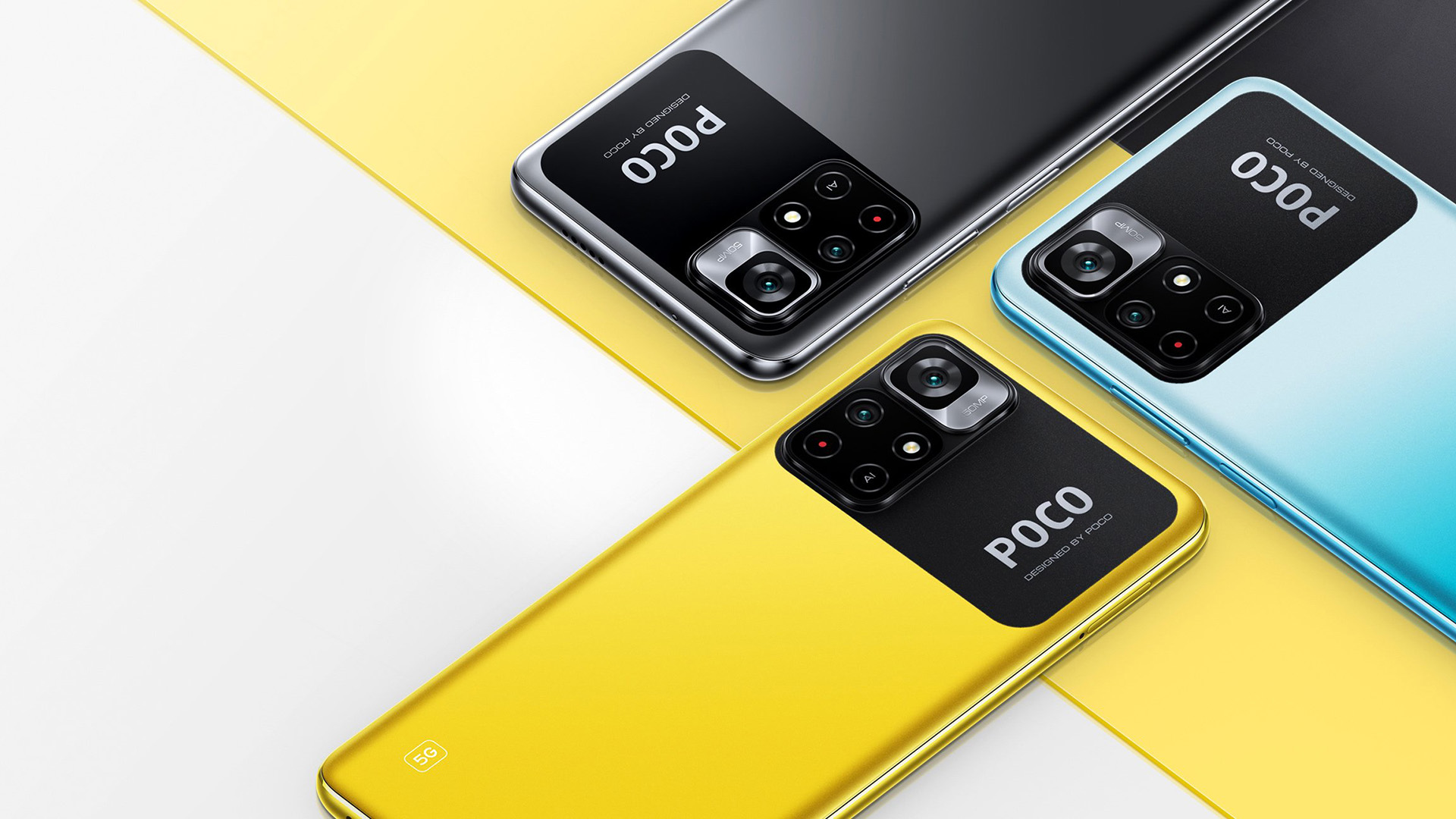
The Poco M4 Pro 5G is a surprisingly powerful smartphone for the price with a big, 90Hz display and beefy battery making it a reliable pick for just about anyone. It’s not as impressive as Poco would have you believe, but it’s a solid offering for anyone looking to get great value.
-
+
Fast performance
-
+
Stylish design
-
+
Low cost
-
-
Display color shift
-
-
Poor video
-
-
Better options exist
Why you can trust T3

POCO M4 PRO 5G - Key Specs
Main screen: FHD+ (2,400 x 1,080) 6.6-inch IPS, 90Hz
CPU: Mediatek Dimensity 810
GPU: Mali-G57 MC2
RAM: 4/6GB
Storage: 64/128GB UFS 2.2
Battery: 5,000mAh
Rear camera: 50MP main, 8MP ultra-wide
Front camera: 16MP
OS: Android 11
Xiaomi’s Poco brand is back at it with the Poco M4 Pro 5G, its new budget smartphone boasting the guise of a more expensive device. At roughly $280/£210, the Poco M4 Pro 5G is one of the more affordable smartphones on the market, and certainly one of the cheaper options offering 5G connectivity.
While the Poco M4 Pro 5G has its fair share of shortcomings, they are not all that unique to it. Rather, it makes some of the same stumbles that a lot of phones in its price range do. It may be overpromising and under-delivering, but it’s still a reasonably capable phone at a modest price.
Poco M4 Pro 5G review: price, release date and what's in the box
The Poco M4 Pro 5G is a recent addition to the market after a launch on November 11, 2021.
The phone has a €229 price tag for the 64GB model which comes to roughly $280/£210. The package includes the phone with a pre-applied screen protector, a USB cable, and a 33W power brick (with EU plug).
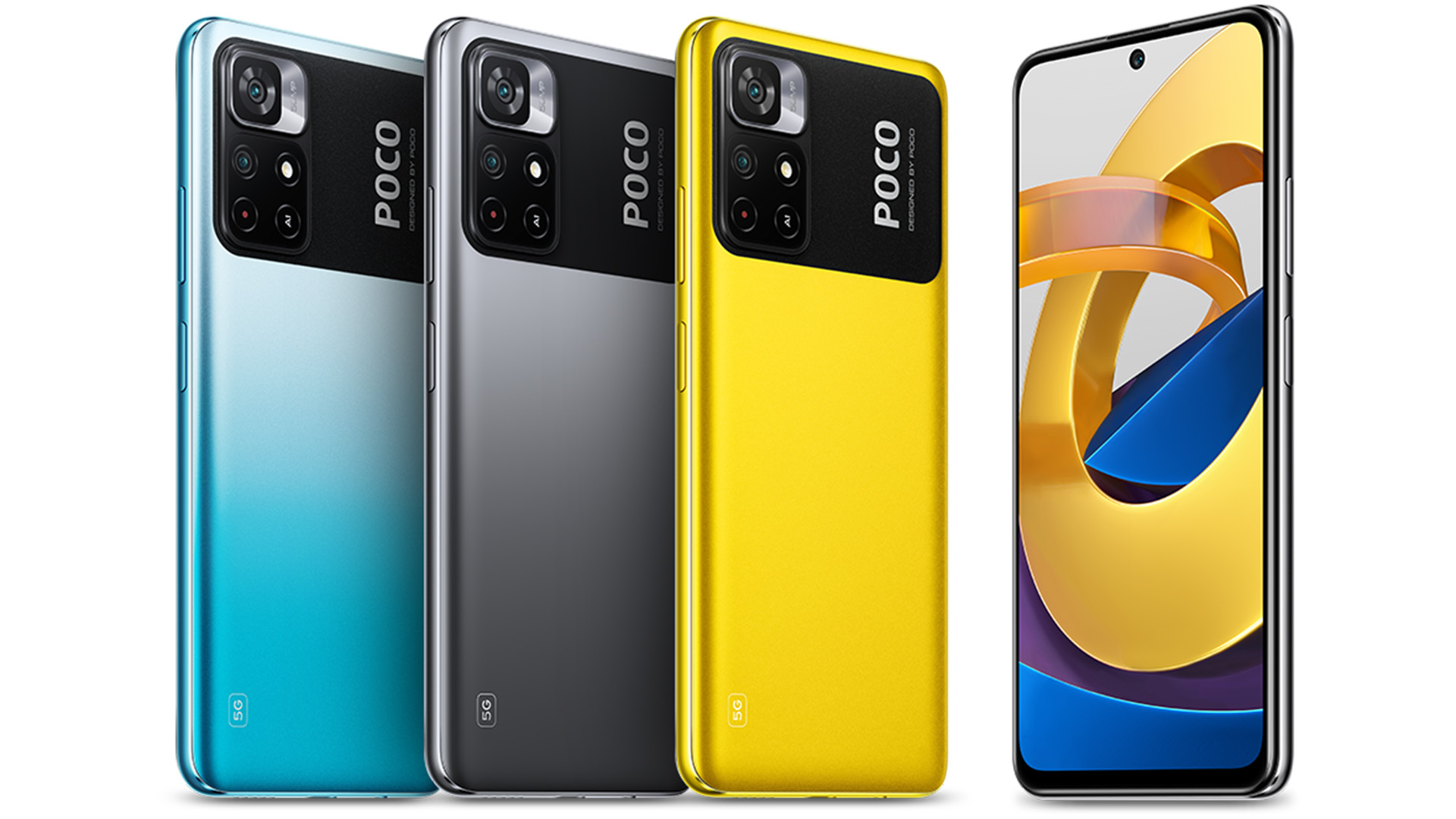
Poco M4 Pro 5G Review: design and screen
Despite a classy look, the Poco M4 Pro 5G is not liable to win any design awards. The frame and back look semi-metallic, though they are plastic. It doesn’t have a cheap, flimsy, or hollow feel in the hands though, and boasts the general appearance of other flagship phones that cost triple the price.
The display area is also a step up above a lot of its budget competition. Poco is offering narrow bezels all around, with a somewhat thicker chin bezel that manages not to be too distracting. Up top, a hole-punch selfie camera doesn’t disrupt the display too much. There’s even a pair of loudspeakers (though the bottom speaker is dramatically louder than the top one) for stereo audio and a headphone jack. While many budget smartphones offer a headphone jack, a lot also settle for a single loudspeaker.
Its Xiaomi roots are shown on the back of the phone, as the phone camera area borrows the design language of the recent Xiaomi Mi 11 Ultra. A sizable area at the top of the phone is boxed out, albeit mostly just for a branding space and not for the massive cameras and rear display of the Mi 11 Ultra.
The Poco M4 Pro 5G has a sizable camera bump in keeping with the more recent trend, but it’s largely wasted space. The main 50MP has a large space that is actually raised further above the larger camera bump. The ultra-wide sensor is situated below that in what might look like a four-sensor array at first glance, but it’s actually just flanked by the flash, and then two filler spaces, one with a red dot (symbolizing a recording light, perhaps?) and a space that just says “AI.” On the plus side, some cheaper brands have filled spaces like that with fake sensors, and Poco hasn’t.
Luckily, it hasn’t opted to parrot flagship smartphones by using an in-screen fingerprint scanner, nor has it put one on the rear. Instead, the Poco M4 Pro 5G has gone with a side-mounted fingerprint scanner built into the power button. It’s substantially faster than the scanner on my Galaxy S20, and easy to find with my thumb. But, because it can unlock the phone with just a touch (not a press), it’s easy to accidentally unlock the phone and then press the button to then immediately lock it and sleep the screen. That said, the phone actually has a setting to change this behavior so the fingerprint will only register when the button is pressed.
The display is a bit of a mixed bag. On the one hand, Poco has provided a large display that benefits from the smoother experience offered by a 90Hz refresh rate. With a touch sampling rate up to 240Hz, the phone also feels fairly responsive while scrolling through webpages. But, the display isn’t as lustrous as Poco makes it out to be. The IPS panel is fairly bright, and it’s 1080 x 2400 resolution is easily sharp enough even at 6.6 inches. But, the display has poor viewing angles, with color and brightness shifting dramatically when viewed from an off angle. If you were to try watching a show with someone and placed the phone between the two of you, it would be a largely degraded experience. This visual quality isn’t so uncommon at the price, but Poco’s own F3 offers a massive display upgrade (among many others) for only a little uptick in price.
Poco also included an interesting extra feature in the form of an IR emitter. This can be used to turn the phone into a remote control for TVs, projectors, and even air conditioners. There’s an app that helps set up and manage the various saved remote controls. It was easy enough to get working for power and volume controls, though I didn’t manage to get it working for all of the TV’s controls.
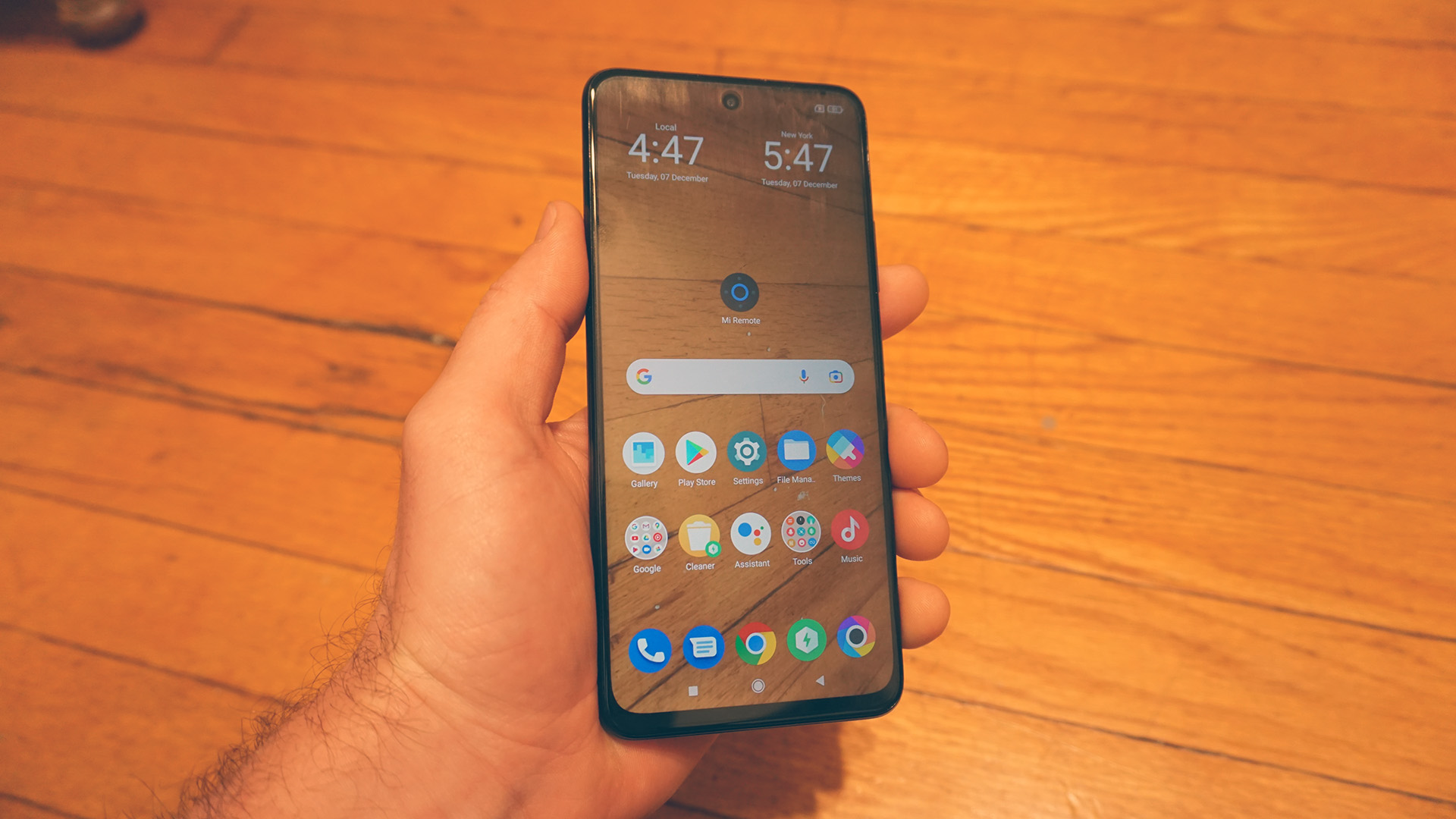
Poco M4 Pro 5G Review: hardware and performance
The Poco M4 Pro 5G is designed to punch above its weight class (or price class, in this case) with robust internals you wouldn’t expect from most phones at this price, and it does a competent job of this. The Mediatek Dimensity 810 chip inside class-leading, but you won’t find another phone for under $300 rocking such a powerful chip.
By offering well-balanced performance for everyday utility, the Poco M4 Pro 5G succeeds. Opening, running, and switching between apps proves smooth as I’d want from any phone. It’s not that everything opens in the blink of an eye, but I don’t find myself waiting overly long nor is there frequent lagging out as I switch between tasks. In benchmarks, the chipset lagged a little behind the Snapdragon 765G, but it steps out well ahead of Snapdragon 662 powering the Moto G Power (2021).
Interestingly, those looking for a beefed up gaming experience can find it here. Launching races in the fairly demanding Asphalt 9, the Poco M4 Pro 5G can chug and stutter a little bit, but once the race is going, it’s fairly smooth sailing. Thermals are even kept well in check, with the phone never going beyond a little warm while gaming.
The benefit of that smooth operation is more readily realized thanks to the 90Hz display. One thing not helping out as much as the more dated UFS 2.2 storage. While I didn’t find myself waiting forever to launch apps or large games in particular, I’ve definitely experienced faster.
It comes in two capacities, a 64GB model with 4GB of RAM and a 128GB model with 6GB of RAM. That’s not too shabby for a low-cost phone, and those needing more storage have the option of using a microSD card.
There’s support for over a dozen 5G bands too, which should help it connect on a variety of networks. I was able to connect it to T-Mobile’s 5G network, but was unable to see the high speeds the network intermittently provides. That could simply come down to chance, though.

Poco M4 Pro 5G Review: camera, OS and battery
The Poco M4 Pro 5G comes running Android 11, thankfully avoiding running too dated an OS. It comes with MIUI, which doesn’t feel like an overbearing interface or one that tries to reinvent Android.
MIUI changes the notification shade and quick settings of the OS. Rather than having one shade that combines both, MIUI has separated them, so a swipe down on the left half of the phone will pull down a shade with just notifications while a swipe down on the right side will pull down a large screen of quick settings. Once the shade is open, swiping left or right can switch between them.
The quick settings shade is also quite extensive, with a number of large shortcuts at the top, an array of smaller ones below that, and a collection of smart home devices and device groups below that. It took a little adjusting to get used to, but it’s a fairly useful twist.
One down side is that the phone came with a fair amount of pre-installed software, including a handful of games, social media apps, and online marketplaces. Opening two pre-made app folders also brought up an officious list of “Promoted apps,” seeing advertising effectively work its way right onto the home screen.
The camera system is competent for the price. That’s usually all I’d ask for from a phone on a budget, and it’s a pleasure to see that sometimes it captures a rather decent shot. It’s even more impressive to see the camera’s portrait mode take a quality snap now and then.














In bright conditions, the primary camera can get a good photo, but as it gets darker, the noise in photos ramps up dramatically. Colors feel a little bland and undersaturated but not to the point of feeling unrealistic.
The ultra-wide camera is far less impressive. It does provide a lot more coverage of a scene, but the amount of noise and blurry details it captures make for a far worse image in every instance. That said, this is typical of secondary cameras on phones at this price. Fortunately, selfies will come out looking good, as the front-facing camera snaps with clarity more akin to the primary sensor on the rear
Don’t count on this phone for quality video though. In my testing, it frequently stuttered while recording, and the resulting videos often displayed this stutter as well. This was less of an issue while recording in 720p at 30fps, but that’s a disappointing concession to make for a camera that “can” record in 1080p at 60fps.
Battery life is a strong point for the Poco M4 Pro 5G. It has a 5,000mAh that easily holds up through a full day of use. Light users would likely see two days of life out of the battery. The phone also supports 33W fast charging, but I was unable to test this as the charging brick included in the box was for a different region. A 65W PD charger I had on hand got the phone from 0 to 100% in about 105 minutes.
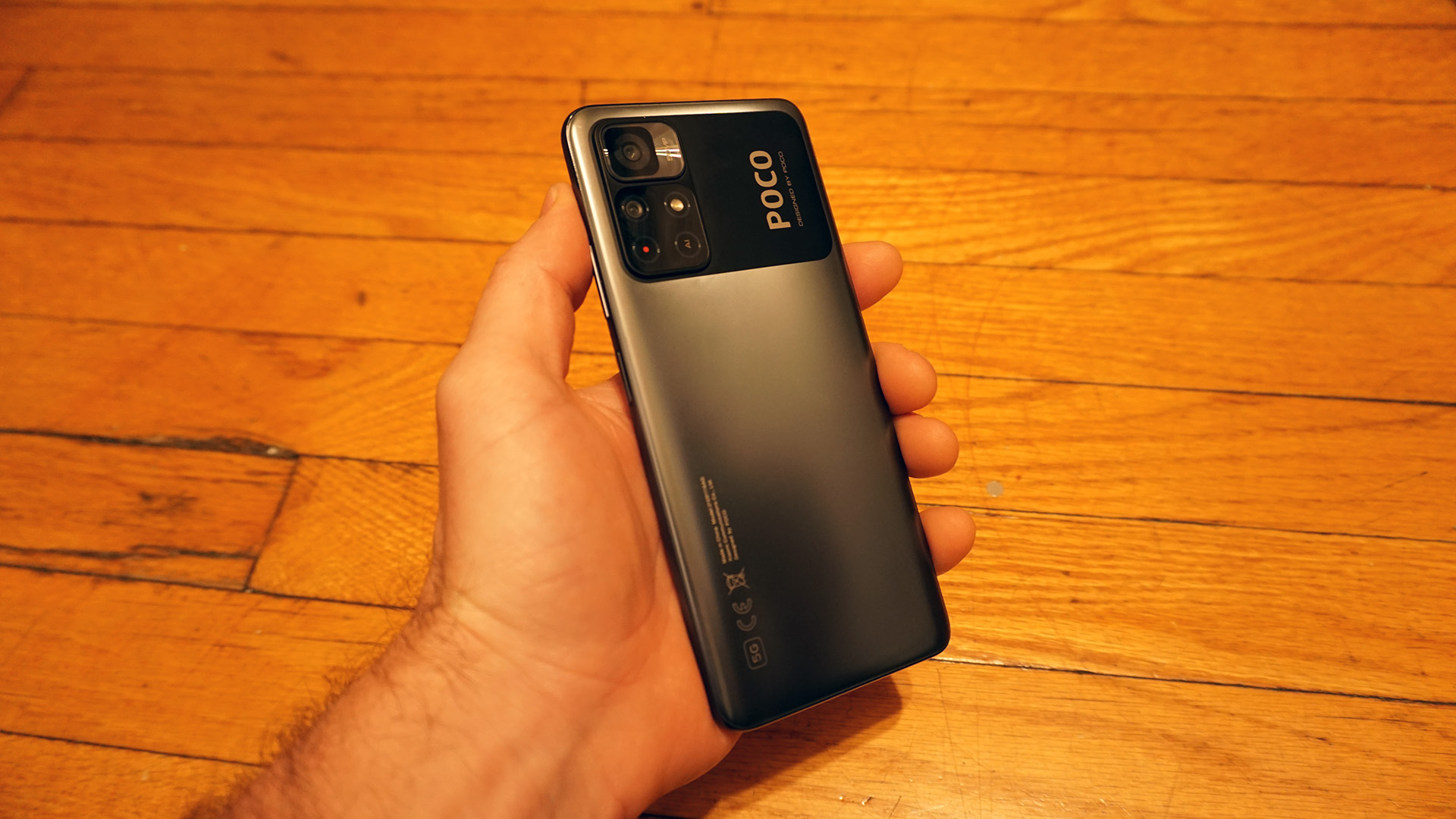
Poco M4 Pro 5G Review: verdict
The Poco M4 Pro 5G is a worthy phone for the performance it’s offering at its price. The Dimensity 810 chipset is a surprise star, and it efficiently draws from the large battery for all-day power. The quality seen on the display and offered by the cameras could be better, but it’s on par for this budget. The Poco M4 Pro 5G’s biggest problem may be that the Poco F3 is offering a lot more for just a small uptick in price.
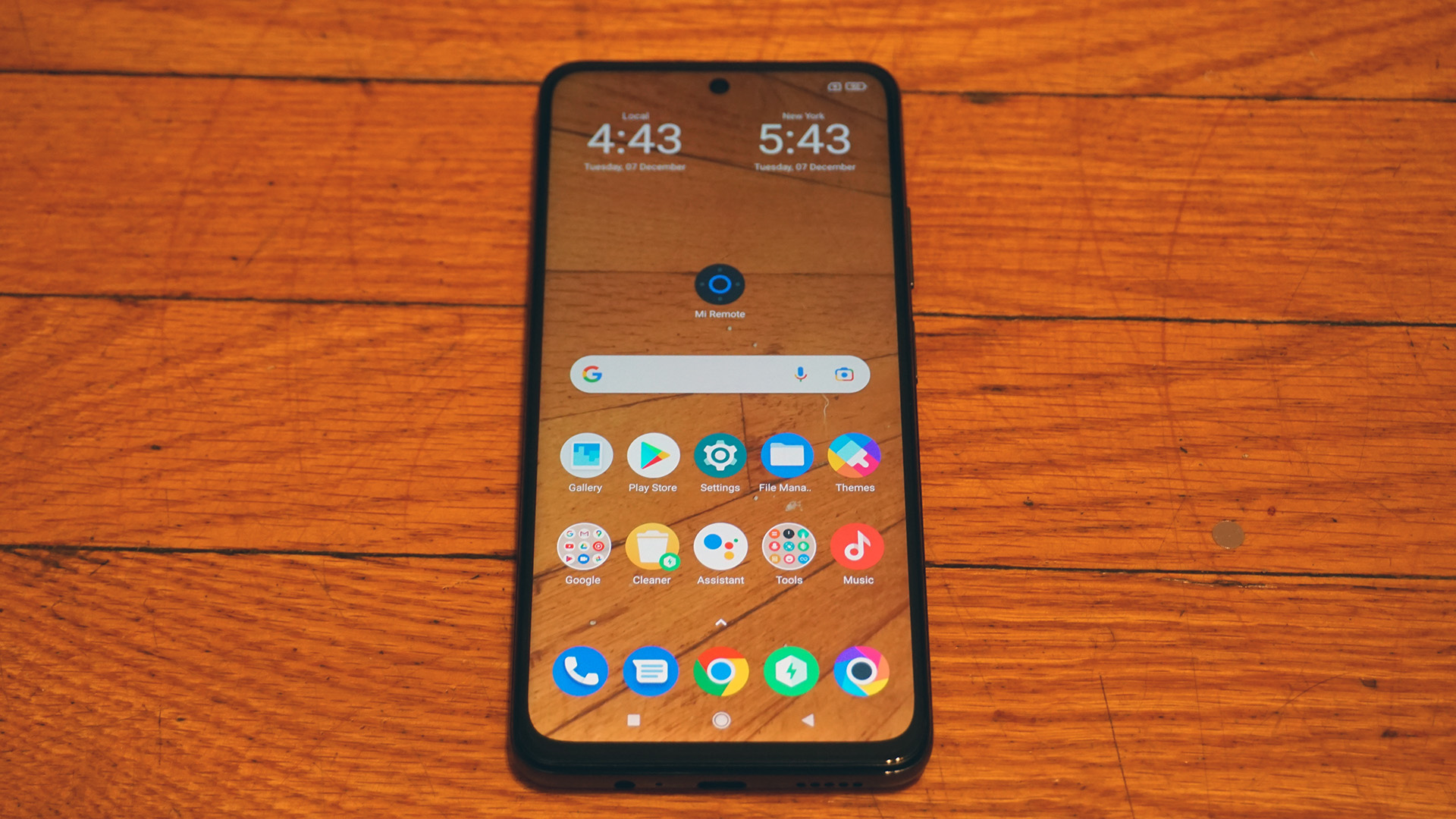
Get all the latest news, reviews, deals and buying guides on gorgeous tech, home and active products from the T3 experts
Mark Knapp has covered tech for most of the past decade, keeping readers up to speed on the latest developments and going hands-on with everything from phones and computers to e-bikes and drones to separate the marketing from the reality. Catch him on Twitter at @Techn0Mark or on T3, PCMag, IGN, TechRadar, Business Insider, and Reviewed.
